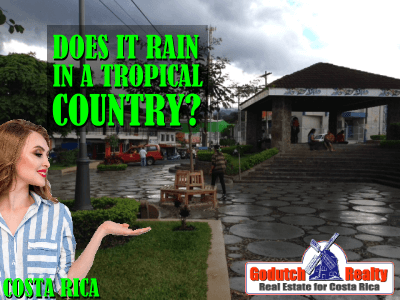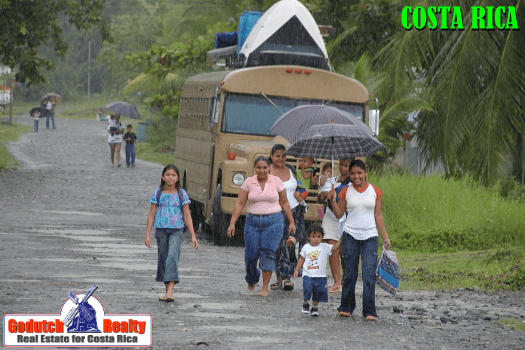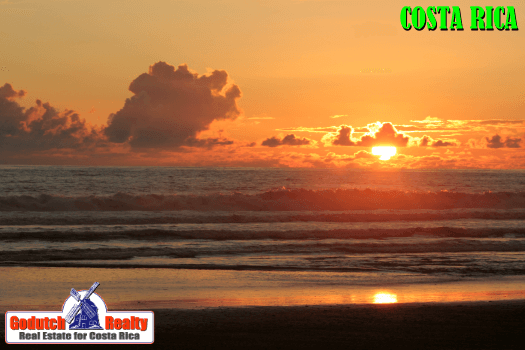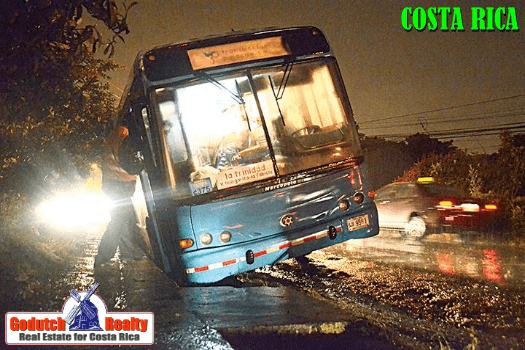 Did you know that Costa Rica is a tropical country? And that there a few things you should know about living in a tropical country before you move?
Did you know that Costa Rica is a tropical country? And that there a few things you should know about living in a tropical country before you move?
You may have already guessed, I’m from the West Coast. A second-generation native Californian, in fact. Both sides of my family lived In California for about a century. So, there are some things about Costa Rica that are pretty new to me. And hopefully to you too so you can enjoy this blog.
A few of my observations about this tropical country may not be so different from what you experience daily. My blog on the Costa Rican weather covers what we have experienced to date.
This blog is mostly about the Central Valley where we reside.
About the weather
Costa Rica is a tropical country—well, duh!
What I am trying to say is, it can be very humid in the rainy season. This depends greatly on where you are located and the elevation. Or if you live on either of the Costa Rican coasts, the Pacific or Atlantic, it’s humid any time of the year.
The rain here is often, but not always, of the tropical variety. Which means to me: it rains harder than I’ve ever seen. The rain can also be very gentle, calming, and quite pleasant. I’m not experienced enough yet to be able to tell if, how much or when it will rain by looking at the sky.

Umbrellas
However, if you see more than half of the Ticos carrying an umbrella, there’s a pretty good chance that there will be a noticeable amount of rain in your near future. In the rainy season, it can rain anytime. But usually rains in the afternoon or early evening. Maybe once or twice for about fifteen minutes.
A tropical country type downpour can easily drop about 2.5 centimeters (1/2 inch) with each rain burst. The downpours are often accompanied by lightning and thunder. But except for the infrequent loss of electricity, it’s very exciting to watch the power of Mother Nature.
Annual Rainfall
The annual rainfall in the Central Valley of Costa Rica has averaged 387 centimeters (77 inches). That’s typical for a tropical country. Most of it falling during the rainy season (called “green season”). However, the worldwide climate appears to be changing. It seems that Costa Rica is no exception.
Last year, Costa Rica experienced a drought. There was even water rationing in some areas of the Central Valley. A few barrios for a period during the dry season of 2012-13 needed water trucks to supply them with water. For being considered a third-world country, Costa Rica does a pretty decent job of handling the water.

Drop-dead mornings
The mornings in Costa Rica are drop-dead beautiful almost every day all year round. They are clear, calm, quiet, and sunny. Sitting on your terrace with a cup of coffee and a plate of fresh fruit watching the day brighten just cannot be described.
Although occasionally in the morning during the green season, there are small gangs of low clouds attached to the hillsides or hunkered down in the ravines and lowlands—making it another level of serene and beautiful.
Sunsets
And then there are the evening sunsets. These can be quite spectacular—blue skies and usually with clouds covered in reds and oranges. These evening moments go best with a glass of wine or a rum fruit drink.
Cooler
The higher you are located, typically the climate is cooler and less humid. The tradeoff: the more rain you’re likely to receive. The basin of the Central Valley is between 750 and 1,000 meters (3,000 ft.) elevation. There are folks in the foothills at 1,500 meters living above the Central Valley where the weather can be quite different. At those altitudes, you will find fog, low clouds, frequent mist, cool days. This very much resembles the cloud forests for which Costa Rica is renowned.
Daylight hours and sunlight
Costa Rica is close to the equator. This means sunrise and sunset each vary only by about twenty minutes all year.
Sunrise is around 5:30 AM and sunset is around 6:00 PM. We’ve already gotten used to starting the day earlier and barbequing in the dark.
There is no Daylight Saving Time here. This makes perfect sense in a country greatly dependent on agriculture. It’s easier for the farmers to work in as much daylight as they can.
Seasons
There are basically two seasons here:
The green season, which runs from about April through October
The dry season, which is the remainder of the year. Then it rains very, very little—allowing us to make way for the tourists.
Time Zone
Since we don’t change time with the seasons, we’re part of the Central Time during North America’s Standard Time and the Mountain Time Zone during Daylight Saving Time.

The Sun
The sun is very bright in Costa Rica all year round. Combine this with the fact that we’re close to the equator (and therefore closer to the sun). Because of the altitude where the Central Valley rests, the air is thinner. It is very easy to get over-exposed and suffer sunburn. This can be quite severe. However, it’s not much different than going to the beach or the lake during the summer. Just “slather” up and enjoy the day.
Some other basic geographical facts
By checking a global map, you’ll see that Costa Rica runs as much east to west as it does north to south. I was pretty good with my north, south, east, and west in the States. But this juxtaposition still has me turned around. This beautiful tropical country is longitudinally farther east than many might assume. It is a much shorter distance from San Jose, Costa Rica to Portland, Maine than to Portland, Oregon. And, there is even a part of Southern Costa Rica that is farther south than the northern-most point of South America.
The Author
The author of this blog, Ticonuevo, is a US expat who moved to Costa Rica. Ticonuevo and his wife used the services of GoDutch Realty to purchase a property in Costa Rica. In his blogs, Ticonuevo describes his own experiences of taking the step of moving to Costa Rica and getting a new life started.
If you like this blog, subscribe to my newsletter by clicking the banner below.
I DO want to remind our readers that we appreciate any referrals you can send us. Also, please remember the GoDutch Realty agents when you talk about your home in Costa Rica, we appreciate it.

























